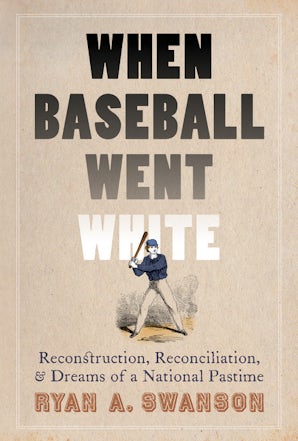
272 pages
4 illustrations
June 2014
978-0-8032-5517-3
$19.95 Add to CartJune 2014
978-0-8032-5518-0
$19.95 Add to Cart
“Ryan Swanson's carefully researched and wonderfully nuanced study of baseball’s declining race relations during Reconstruction sheds considerable light on this oft-neglected topic. A must-read.”—Peter Morris, author of A Game of Inches and Level Playing Fields